By TREVOR HOGG
Images courtesy of Netflix.
By TREVOR HOGG
Images courtesy of Netflix.
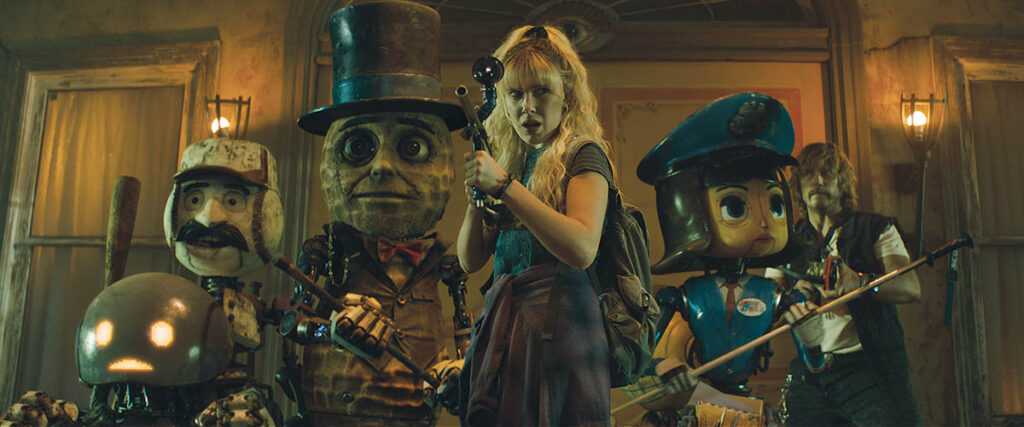
Even though the term ‘retro-future’ is nothing new, Swedish artist and musician Simon Stålenhag has been able to create a unique vision where discarded technology is scattered across vast landscapes situated in an alternative universe. His illustrations and accompanying narratives have captured the attention of filmmakers such as Nathaniel Halpern with Tales from the Loop for Prime Video and siblings Anthony and Joe Russo with The Electric State for Netflix, which they spent seven years developing. The latter revolves around the aftermath of a robot uprising where an orphaned teenager goes on a cross-country journey to find her lost brother. The human cast consists of Millie Bobby Brown, Chris Pratt, Stanley Tucci, Giancarlo Esposito, Ke Huy Quan and Jason Alexander. At the same time, Woody Harrelson, Anthony Mackie, Brian Cox, Alan Tudyk, Hank Azaria and Colman Domingo voiced the many mechanical co-stars.
“Simon Stålenhag’s original artwork electrified us,” producer/ director Anthony Russo remarks. “It’s this strange feeling of familiarity in what he’s drawn and also strangeness. It’s a historical period that you can recognize whether or not you lived through it, but it’s not exactly what that period was.” There are elements from the 1990s. “The story is a parable,” producer/director Joe Russo notes. “It’s less about nostalgia than it is about the idea that technology could have developed faster and maybe deviated humanity from its main path. That was the fun part, thinking through those little elements that allowed us to create a new interpretation of the 1990s.” The story taps into the present-day fears of AI usurping its human creators. “Part of what we want to do is explore the fact that you can find humanity in technology and inhumanity in humans,” states Anthony Russo. “We have both of those experiences in our lives and world. Joe and I are technologists. We use technology throughout our lives to tell stories, but at the same time, we all know that technology is powerful and can cause problems, whether the nuclear bomb or social media. It’s us recognizing the complex relationship that we all have with technology as human beings.”
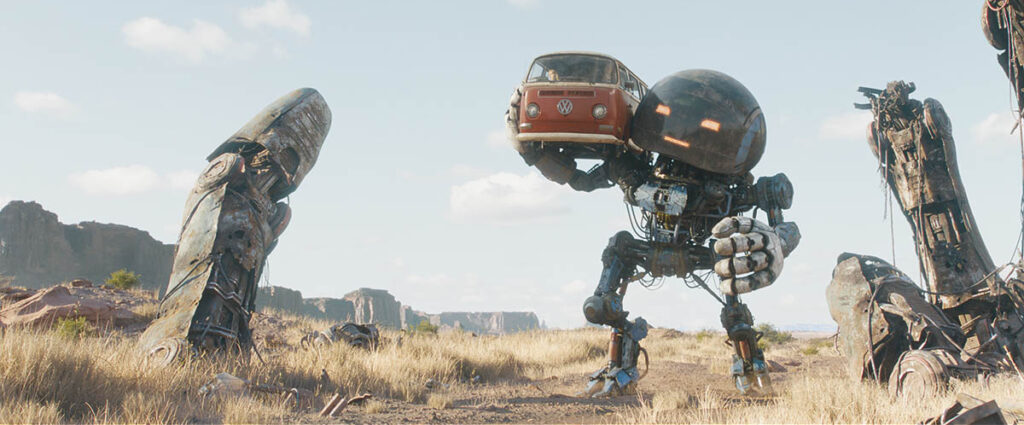
Determining how the robots would be created and executed was a major topic of discussion as they are 80% of the cast. “This is true for all of our projects when you’re dealing with a fantasy world that needs to be created from whole cloth that doesn’t exist,” states Anthony Russo. “The methodology used to create that is always a question. It is driven by how Joe and I see the movie. What are we trying to achieve? What do we want to do with the scenes? How do we want to stage things? How do we want the actors to interact with other characters in the movie who may not be played on the screen by physical actors? These all become questions in terms of what is the right methodology to use to create the film. We were involved with our Visual Effects Supervisor, Matthew Butler, to determine the proper methodologies. Because there are so many characters in it that don’t exist in reality, we had to rely upon visual effects to create a huge portion of the film.”
Dennis Gassner and Richard Johnson, who consulted robotic companies, shared production designer duties. “I was in charge of making a real walking and moving Cosmo,” states Production Designer Richard Johnson. “I had to go to every robotics company in the world that would listen to me. The immediate refrain was. ‘The head is a deal-breaker. It throws him immediately out of balance.’ If you look at all of the real robots that are popping up on the Internet today, they all have tiny heads. The other limiting factor was height. They were all in the zone of 5’ 7” or less. I now know more about real robots than I ever expected to know my entire life!” The robots had to be distinct in their own right. “We felt the robots with more screen time needed to be more iconic-looking, so we looked at iconic products or services or things from the last two, three or four decades. Mr. Peanut is very well-known brand name. We thought, ‘He could be a robot. Baseball player. Very iconic. Be a robot.’”
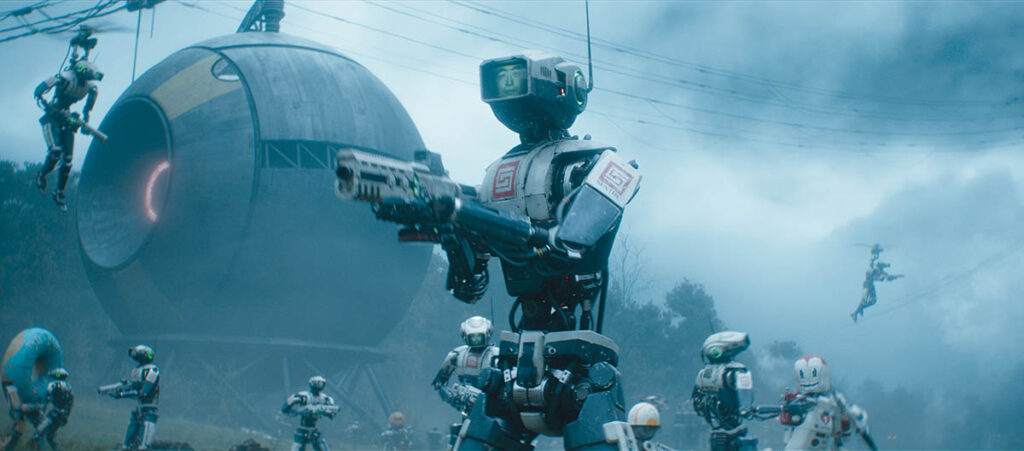
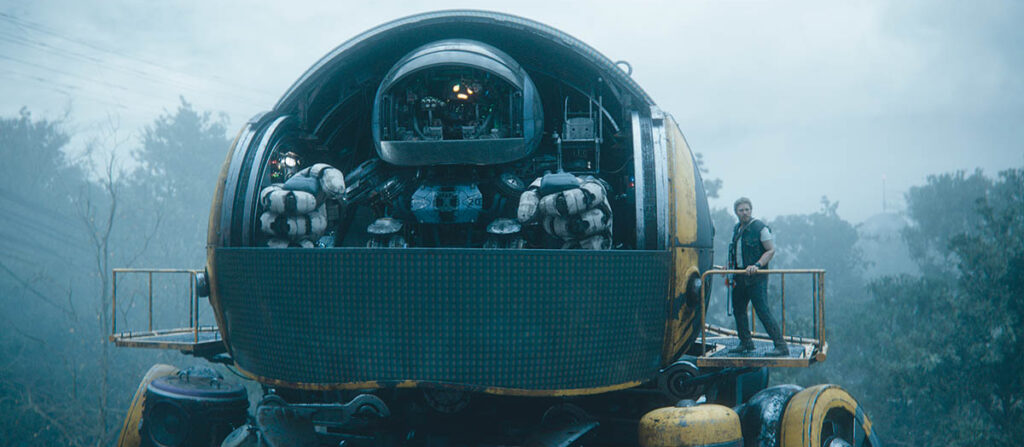
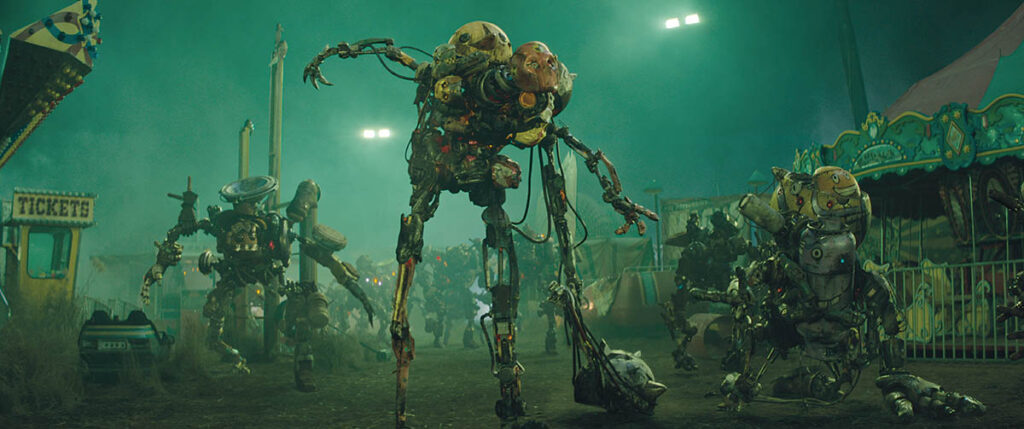
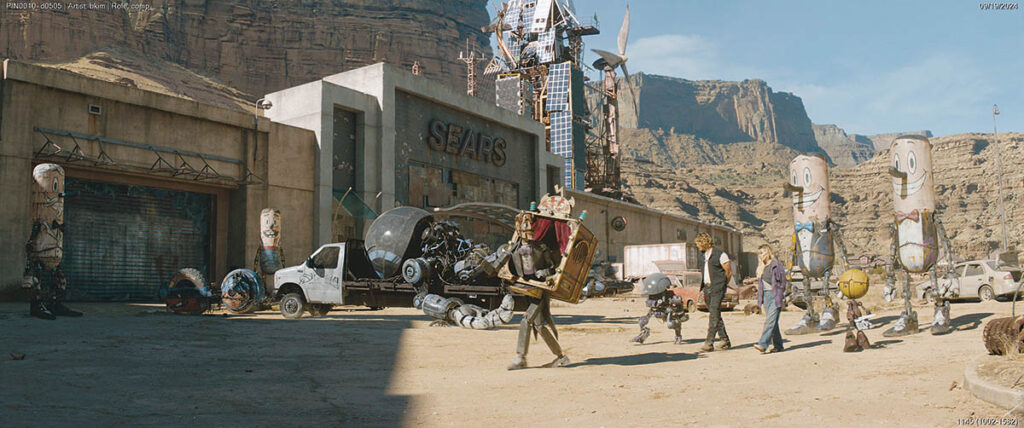
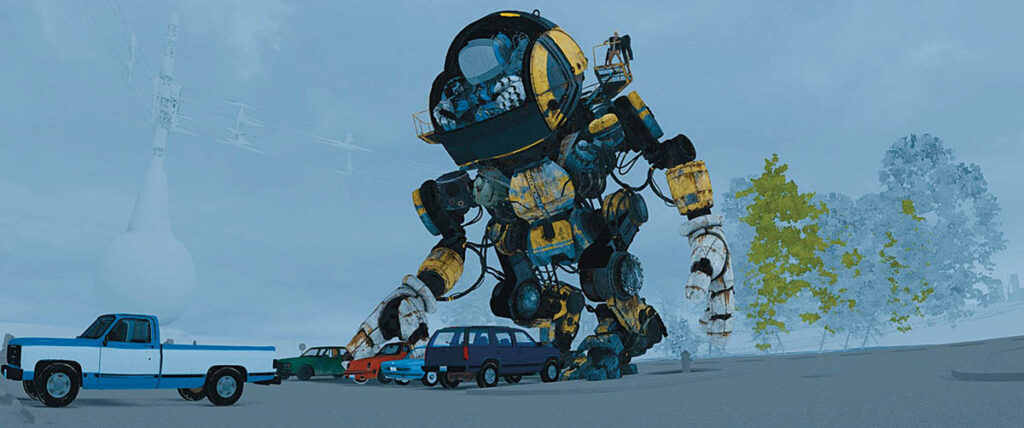
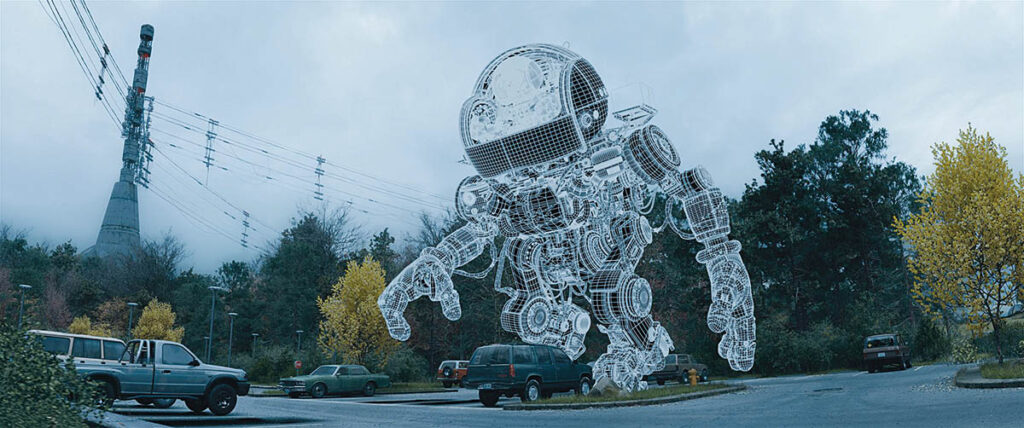
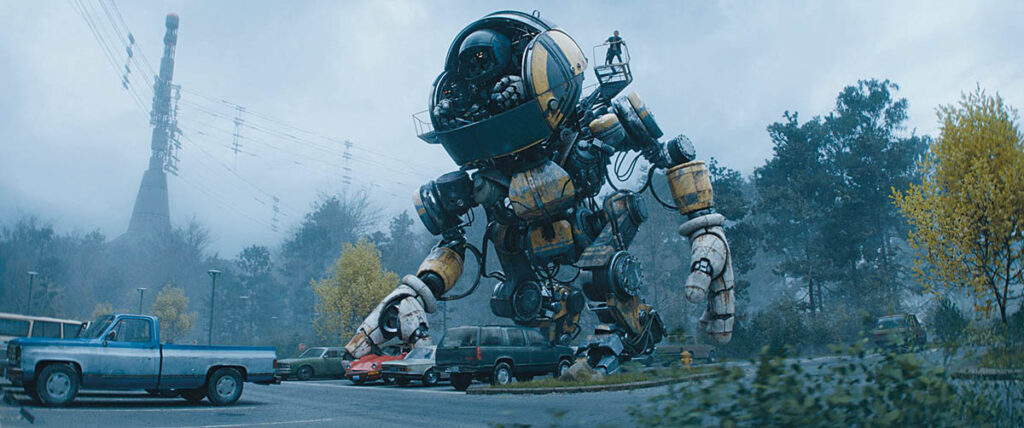
Approximately 2,000 visual effects shots are in the final film, with Digital Domain and ILM being the main vendors, followed by Storm Studios, One of Us, Lola VFX and an in-house team. “We’re not in a world of magic,” observes Visual Effects Supervisor Matthew Butler. “The idea is that these robots were often designed to make us feel comfortable about them serving us. I fought tooth and nail to put in little piston rod push-pulls and things that could justify that Cosmo could actually move. If we designed a particular ball joint or cylindrical actuator or pitch actuator, we made sure that the motion of these robots was restricted to what that could do.” Artistic license was taken with the original design by Simon Stålenhag. “I wanted Cosmo’s eyes to have some emotion. Rather than be just a painted pupil as in the book, we made a smoked glass lens for the pupil that you can see behind it that there is a camera. Artistically, we let those eyes have a gratuitous green light to them. Now, you have a twinkle of an eye and can get emotion into that eye. That was another tricky thing. It was about getting enough emotion into them without breaking the silhouette of the design of the robots that we needed to adhere to – that was hard,” Butler says.
Keats’s (Chris Pratt) robot sidekick, Herman, comes in different sizes. “It was always the Russian doll thing where the one size smaller fits into the one size bigger,” Butler remarks. “We did honor the style and personality but not at the expense of physics. Most of the movie is four-foot Herman with Anthony Mackie’s [vocal] and Martin Klebba’s [mocap] performances. It’s also coming out of the script. He’s this sarcastic character. I love his personality, and it came through extremely well. Herman borrowed the power extension cable for his devices and forgot to return it. Meanwhile, all of Keats’ food in the fridge has gone bad. Herman has messed up, and he’s like a guilty teenager shuffling around on the couch, deliberately avoiding eye contact with Keats because he’s this busted little kid. That character is amazing, and it carries through the movie well. Chris Pratt was perfect for this, and it works so well for the two of them. It’s most people’s favorite relationship in the movie.”
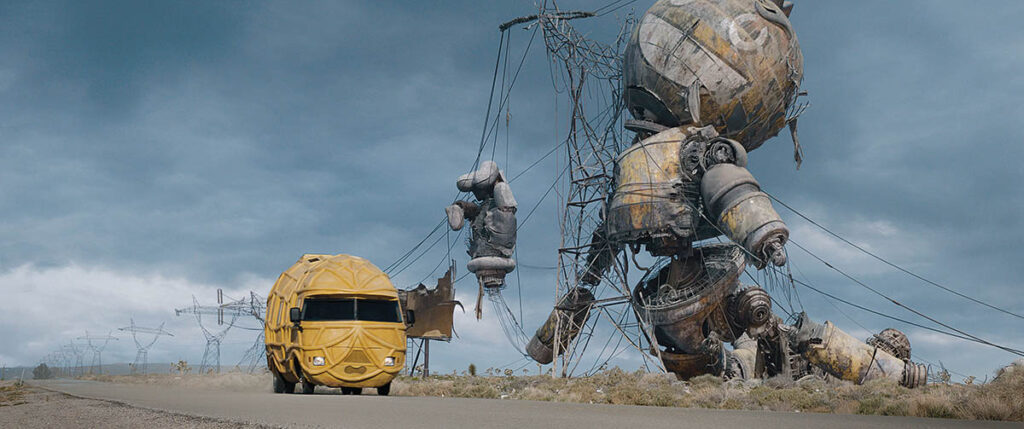
Following the example of animated features, Lead Storyboard Artist Darrin Denlinger storyboarded and assembled the entire film into an animatic. “I had a version of the movie before we started shooting, or close to when we started shooting, that was a layout,” states Jeffrey Ford, Executive Producer and Editor. “It had all the storyboards cut together in sequence with sound, music and subtitles instead of dialogue. I used that as a layout to guide us throughout production so we knew roughly how scenes would play out. Of course, things change on the day; actors re-block the scenes.” The amount of footage captured surpassed Avengers: Infinity War and Avengers: Endgame. Ford explains, “This film that had to be made multiple times because when you deal with animated characters carrying this much weight dramatically, those performances are created in passes. You may shoot a proxy pass where Millie interacts with Cosmo, and it’s a motion capture actor. Then you may shoot a pass where she is interacting with nothing. We might go back and shoot that same performance on the mocap stage multiple times. We may end up with various iterations of those visual effects as they come in over the months. An enormous number of iterations go on, and when you do that, you generate enormous amounts of footage.”
Atlanta doubled as the American Southwest. “Tumbleweeds and sagebrush, the basic things a person sees in the Southwest, do not exist in Atlanta or anywhere near there,” Johnson notes. “We had to fill several trucks with all that stuff and bring it into Atlanta.” Parts of Atlanta have not changed for years. “Through the camera’s eye, if you wanted to say that it was the 1970s or 1980s, it was easy because nobody had built modern or contemporary homes in those neighborhoods for whatever reason. The same thing happened when selecting the locations for the battles in the city. If you put in the right period of car, voilà! You’re in that era.” A question that had to be answered was where exiled robots responsible for the uprising would live. “The X was in the script and is a large area in the Southwest. Where would these guys go? A country club? A department store? Football stadium? We landed on a shopping mall. It dawned on me one day that the only reason they would go to a place like this is to recharge themselves or maybe for repairs. That’s why in the shopping mall, you see a lot of wires, batteries and charging stations.”
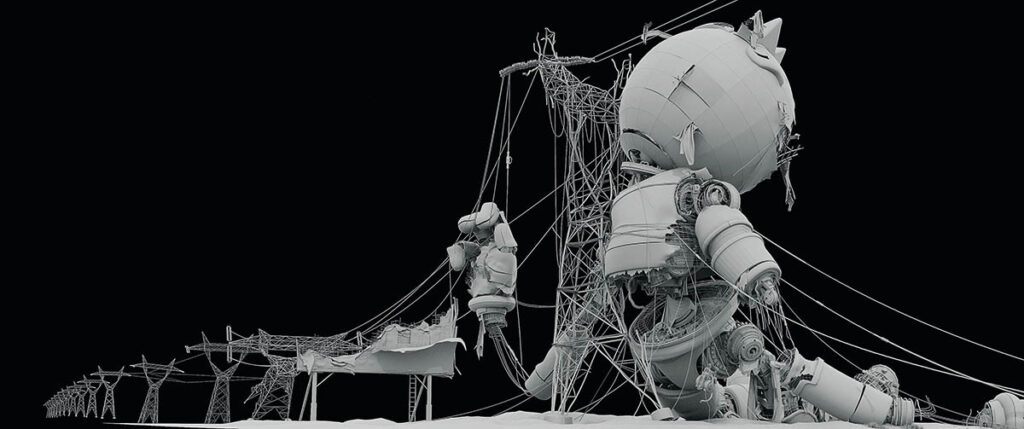
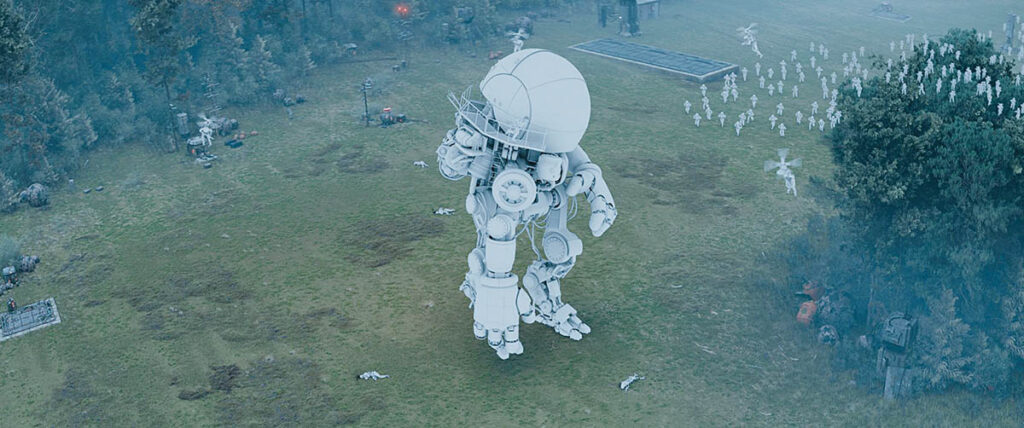
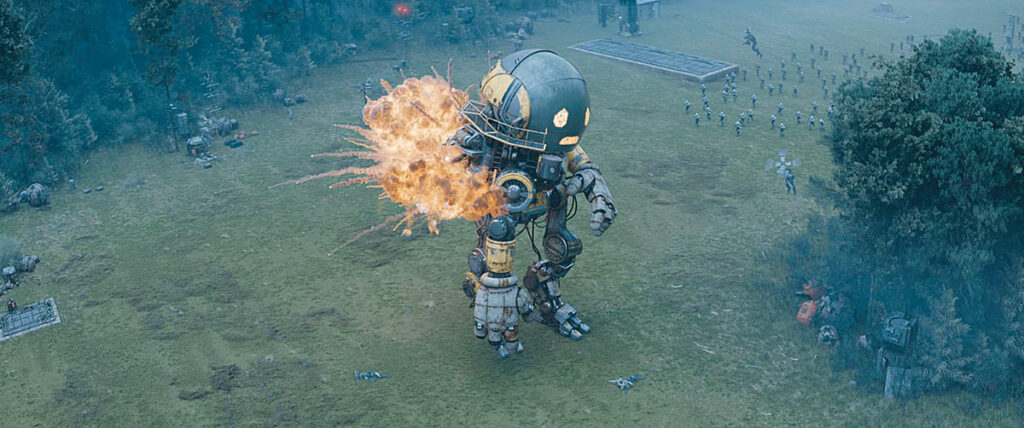
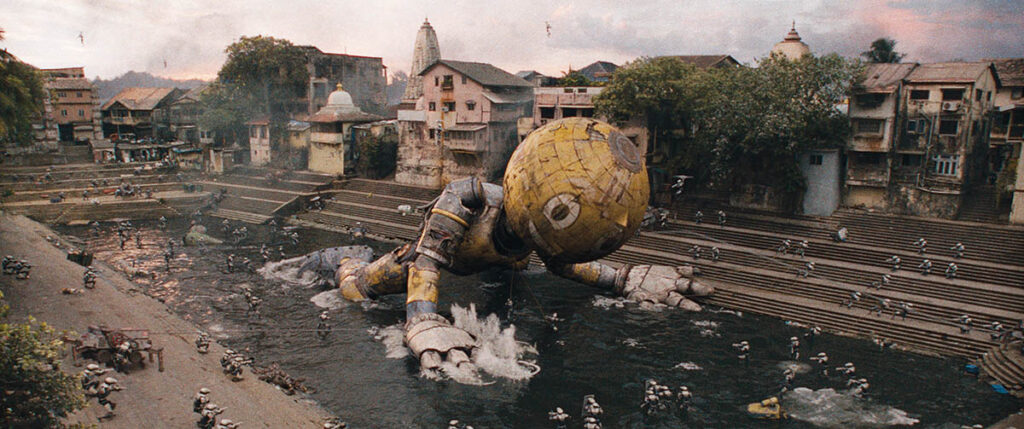

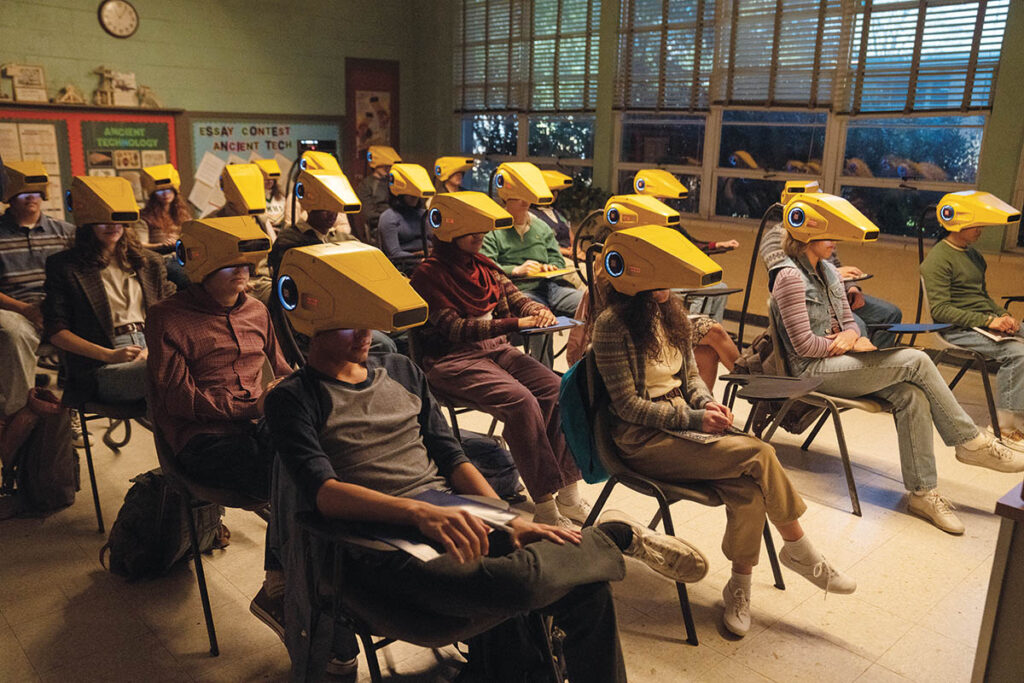
Along with the final battle, which is almost entirely synthetic apart from the Keats’s interaction with the grass, a virtual meeting occurs between antagonists Ethan Skate (Stanley Tucci) and Colonel Bradbury (Giancarlo Esposito). “It’s where Ethan pitches the Colonel to go into the X to get Cosmo back,” Butler recalls. “Bradbury puts on the neurocaster and teleports into this virtual environment that takes place in this beautiful mountain lake scene. Skate is standing in the middle of the lake while Bradbury is on terra firma and gently steps out to have a conversation with him. Production didn’t go to Norway. It’s just a couple of guys and girls from Storm Studios [located in Oslo] with some backpacks hiking out into some beautiful locations in the summer for reference. We had a shallow pool with plexiglass an inch under the surface so we could have Stanley and Giancarlo stand in the water. The only thing that we kept was the little bit of interaction of water locally right at their feet while the rest was digital water. The ripples needed to come out and propagate out into the lake as it would for real. It’s absolutely stunning work.”
The hardest shot to execute was when Cosmo, Herman, Keats and Michelle (Millie Bobby Brown) have been captured and are escorted into the mall. “They walk into this forecourt and finally see that the whole mall is filled with robots,” Ford recalls. “That shot was incredibly hard and took us months to do. The only things in that shot are Chris Pratt, Millie Bobby Brown and an empty mall. I drew maps of each frame, and we did a whole progression. We talked about where the different robots were, what they were doing, what their day was like, where they were going next and why they were moving in a certain way. We wanted it to feel like a real city. If you were to block out extras, those people would all come up with all of their mini-stories, and they would work it out. But we didn’t have that. We had to figure it all out as animators. It was fun but brutal. Digital Domain did an incredible job on it. I hope people will stop and rewind the shot because it’s beautifully detailed and feels completely real.”